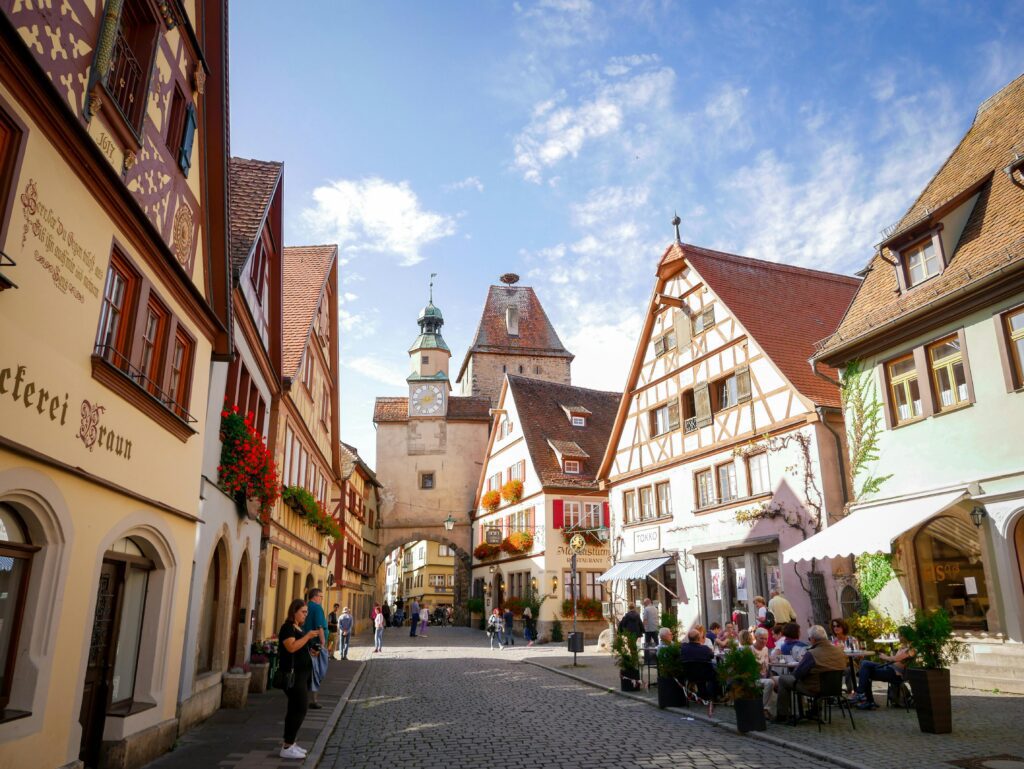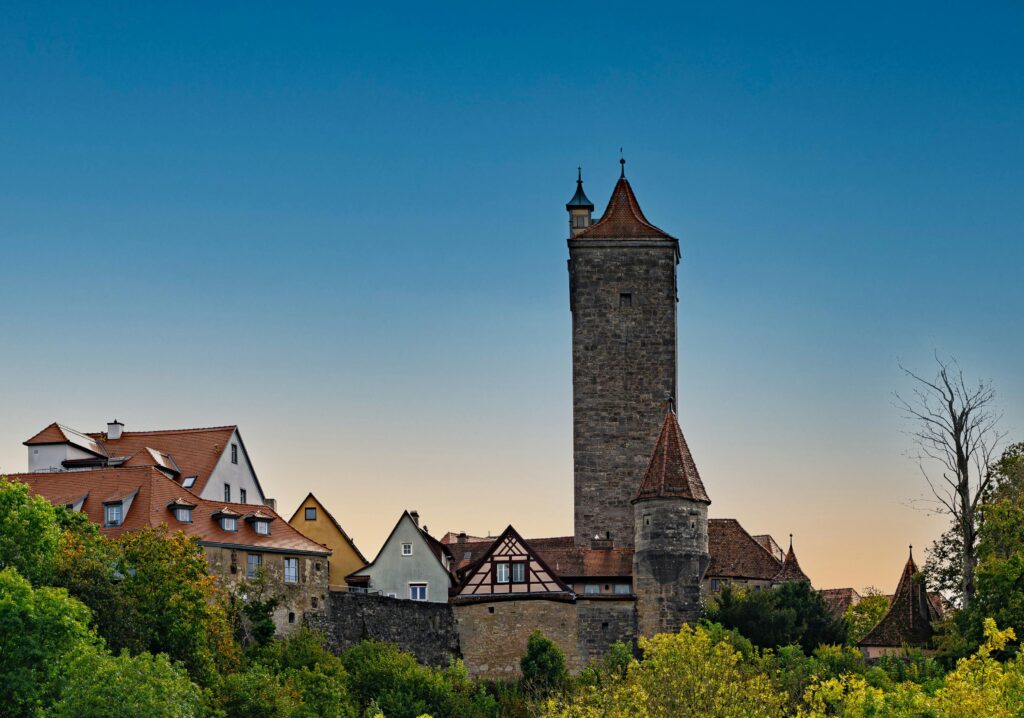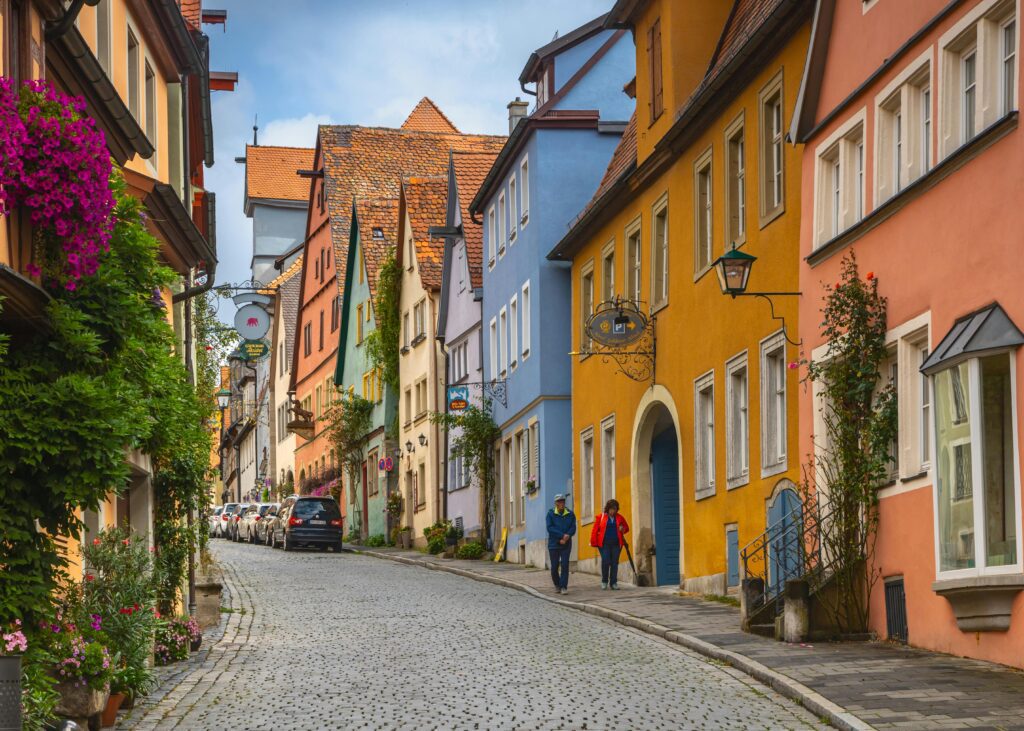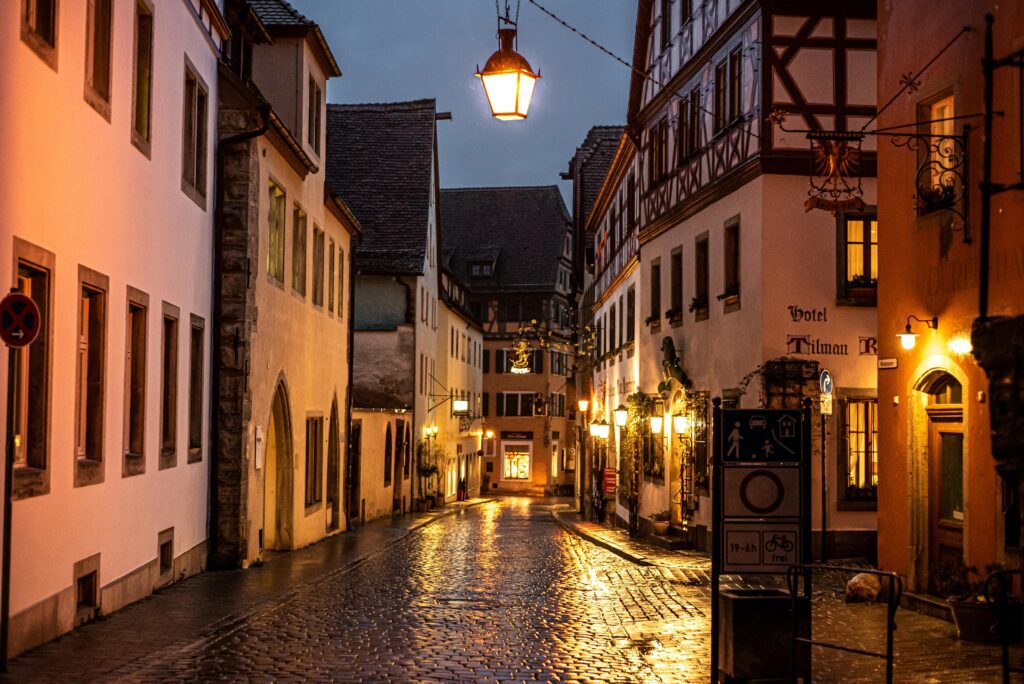“Discover Rothenburg ob der Tauber, Germany’s hidden gem. Uncover essential travel tips and practical advice for an unforgettable journey.”
Introduction: A Medieval Fairytale Come to Life
Stepping into Rothenburg ob der Tauber, Germany, feels like entering a storybook. The moment you pass through one of its ancient gates, the scent of freshly baked Schneeballen mingles with the crisp Bavarian air, while the rhythmic clatter of horse-drawn carriages echoes against cobblestone lanes. Half-timbered houses, painted in buttery yellows and deep reds, lean over narrow streets like characters from a Grimm brothers’ tale. Recognized by UNESCO for its preservation, this Bavarian gem inspired Disney’s Pinocchio and remains one of Germany’s most enchanting destinations.

Why Visit Rothenburg ob der Tauber?
- Postcard-Perfect Scenery: The Plönlein, a fork in the road flanked by yellow timbered houses and a medieval tower, is Germany’s most photographed spot. At golden hour, the warm light bathes the scene in a painterly glow.
- Rich History: Walk the 2.5-mile city wall (free, sunrise to sunset), where you can peer through arrow slits at the Tauber Valley below. The Kriminalmuseum (Crime Museum, €8.50) reveals chilling tales of medieval justice, from iron masks to shame flutes.
- Year-Round Magic: Visit in December for the Reiterlesmarkt (Christmas Market), where mulled wine steams in glühwein mugs and stalls sell hand-carved nutcrackers. In spring, wisteria drips from balconies, and in fall, the surrounding forests blaze with color.
Pro Tip: Stay overnight—day-trippers miss the town’s magical evenings, when the streets empty and gas lamps cast flickering shadows on the stone walls.
Planning Your Trip
Best Time to Visit
- Spring (April–June): Mild weather (10–20°C), blooming gardens, and fewer crowds. The Meistertrunk Festival in May reenacts the legendary “Master Draught” story with costumed parades.
- Fall (September–October): Crisp air (8–18°C), autumn foliage, and harvest festivals. Don’t miss the Imperial City Festival in September, where blacksmiths and jesters take over the streets.
- Winter (December): Snow-dusted rooftops and the Reiterlesmarkt (November 23–December 23). Arrive by 4 PM to see the market glow under thousands of lights.
Getting There
- By Train: From Frankfurt (2.5 hours, €30, change in Steinach) or Nuremberg (1.5 hours, €20, direct). The train station is a 10-minute walk from the old town.
- By Car: Park outside the walls at P5 lot (€6/day) to avoid narrow streets. Electric vehicles can use charging stations near Spitaltor.
- By Bus: FlixBus runs from Munich (3 hours, €15).
Where to Stay
- Budget: Pension Elke (€70/night, cash-only) offers cozy rooms with floral quilts near Marktplatz. The shared balcony overlooks a quiet courtyard.
- Mid-Range: Hotel Gotisches Haus (€120/night) blends historic charm (original 14th-century beams) with modern comforts. Ask for Room #7, with a view of St. Jakob’s Church.
- Luxury: Hotel Herrnschloesschen (€200/night) is a boutique hideaway with a secret garden. Their breakfast includes local honey and Franconian sausages.
Insider Tip: Book at least 3 months ahead for December stays.
3-Day Rothenburg ob der Tauber Itinerary
Day 1: Medieval Wonders & Local Flavors
Morning:
– Walk the Town Walls (start at Rödertor Gate). Feel the grooves in centuries-old stones as you pass 42 towers. Look for the “witch’s leap” marker near Galgentor.
– Climb Town Hall Tower (€2, 220 steps). At the top, the red-tiled roofs sprawl like a patchwork quilt, with the Tauber River glinting in the distance.

Afternoon:
– Lunch at Zur Höll (“To Hell”), a 900-year-old tavern with low ceilings and a crackling fireplace. Order the Franconian Sauerbraten (marinated beef with gingerbread sauce) and a local Tauber Valley Riesling.
– Explore the Christmas Museum (year-round, €4). Admire antique nutcrackers and a whimsical display of 19th-century tree ornaments.
Evening:
– Join the Night Watchman’s Tour (8 PM, €9, cash only). Follow the lantern-carrying guide as he shares grisly tales of plague years and robber knights. His deadpan humor makes history unforgettable.
Day 2: History & Hidden Gems
Morning:
– Visit St. Jakob’s Church (€3.50). The 500-year-old Holy Blood Altarpiece by Tilman Riemenschneider is a masterpiece of Gothic carving—notice the intricate vine tendrils.
– Browse Käthe Wohlfahrt’s Christmas Village. Even in July, the scent of cinnamon and pine fills this year-round wonderland. Pick up a hand-painted glass ornament (€15–50).
Afternoon:
– Picnic by the Tauber River. Grab fresh pretzels from Bäckerei Striffler and local cheese from Metzgerei Schmidt. The Doppelbrücke (Double Bridge) offers the best views.
– Tour the Medieval Crime Museum (€8.50). Don’t miss the “iron maiden” (a Victorian hoax) and the eerie collection of witch-trial documents.
Evening:
– Dine at Restaurant Glocke. Their Schäufele (slow-roasted pork shoulder with crispy crackling) is a Franconian classic. Pair it with a smoky Rauchbier from Bamberg.
Day 3: Day Trips & Souvenirs
Morning:
– Hike to Tauber Valley viewpoints. The 3-mile trail to Detwang (Rothenburg’s oldest village) winds past cherry orchards. Stop at the 12th-century St. Peter and Paul Church.
Afternoon:
– Shop for Schneeballen at Diller’s. These “snowball” pastries come in flavors like pistachio and amaretto. Avoid the powdered sugar ones—they’re messy!
– Visit Rothenburg’s Craft Workshops. Watch woodturners at Holzwerkstatt Drechsel or try pottery painting at Töpferei Bauer.
Evening:
– Sunset drinks at Burggarten. Sip a Hugo (elderflower spritz) while the town’s silhouette melts into the twilight.
Pro Tip: Book the Night Watchman’s Tour early—it sells out by noon in peak season!

Essential Tips for Visitors
Packing List
- Comfortable shoes (cobblestones are unforgiving—leave heels at home).
- Layers (mornings can be foggy, afternoons warm).
- Camera (every corner is photo-worthy, especially the vine-covered Spitalhof).
Local Etiquette
- Greetings: A firm handshake and “Guten Tag” (Good day) suffice. Use “Grüß Gott” (Southern Germany’s “God greet you”) for extra charm.
- Tipping: Round up bills (e.g., €17.50 → €20) or leave 5–10% in restaurants.
- Quiet Hours: Noise is frowned upon after 10 PM—locals take their Ruhezeit (rest time) seriously.
Safety Tips
- Pickpockets: Beware in crowded areas like Marktplatz. Wear a crossbody bag.
- Emergency number: 112 (works EU-wide).
FAQs About Rothenburg ob der Tauber
1. Is Rothenburg ob der Tauber touristy?
Yes, but mornings (before 10 AM) and evenings (after 6 PM) are tranquil. Over 70% of visitors are day-trippers—stay overnight to experience the town’s soul.
2. Can I visit as a day trip?
Possible from Nuremberg (1.5-hour drive) or Würzburg (1-hour train), but you’ll miss the Night Watchman’s Tour and sunrise over the Plönlein.
3. What’s the best photo spot?
The Plönlein at sunrise, when the streets are empty. For a unique angle, climb the Röderturm tower (€2) at golden hour.
4. Are credit cards accepted?
Most hotels and restaurants take cards, but small shops and the Night Watchman’s Tour are cash-only. ATMs are near Marktplatz.
5. What’s a must-try food?
Schneeballen (fried pastry strips shaped into a ball). Skip the chocolate-dipped versions—cinnamon sugar is the local favorite.
Conclusion: Your Rothenburg Adventure Awaits
Rothenburg ob der Tauber is more than a destination—it’s an experience. Whether you’re tracing medieval walls, savoring pork shoulder in a candlelit tavern, or laughing at the Night Watchman’s macabre jokes, this town leaves a lasting impression. As the locals say: “Kommt wieder!” (“Come back!”).
Note: Start planning your Rothenburg ob der Tauber (Germany) adventure today—history, beauty, and Bavarian charm await!
Keywords:
1. “Rothenburg ob der Tauber Germany travel guide”
2. “Best things to do in Rothenburg ob der Tauber”
3. “What to see in Rothenburg ob der Tauber for first-timers”
4. “When is the best time to visit Rothenburg ob der Tauber (Germany)”
5. “Top attractions in Rothenburg ob der Tauber Germany”



